
Medieval 2: Total War is the latest in the Total War series of strategy games from Crative Assembly, which builds on the success of its predecessors, Rome: Total War, Medieval: Total War and Shogun: Total War. In order to complete the campaign, a player must lead armies across the battlefields of Europe to the Holy Land, before crossing the Atlantic to do battle with the Aztec Empire and conquer the New World. The Grand Campaign spans a period of some four hundred and fifty years (1080 - 1530), the most turbulent period of european history, spanning the golden age of chivalry, the crusades, the discovery of gunpowder, the discovery of America, the Rennaisance and the formation of professional armies.
The AI is reported to be a huge step forward from Rome: Total War and the graphics are just fantastic.

If you look closely at this screenshot of Knights, then not only do the units skins look fantastic quality, they are not all the identical. Some men have a different breastplates, others have different designs on their shields. This replaces the "clone armies" of previous strategy games such as Rome: Total War, Medieval: Total War or Age of Empires III. This adds a remarkable touch of realism to the battlefield along with improved battlefield animations, resulting in men who don't always try the same combination of blocking, parrying and striking, whatever their opponent may be.
The campaign uses the same 3D map that debuted in Rome: Total War. The campaign requires the conquest of 45 provinces along with specific provinces, usually either Rome, Jerusalem or both.
The campaign will play in a similar fashion to that of Rome: Total War. A player will have to manage a number of settlements, similar to Sid Meier's legendary Civilization series. Buildings can be bought in settlements to gain improve the settlement's income, growth public order, troop quality and to allow more powerful troops to be trained there. Troops and agents can be trained from settlements and the number of men trained is removed from the settlement's population. Once troops are trained, they must be paid, so every unit drains a small amount of money from the treasury. The economy can be built by building trade routes, farming the land, mining for resources and taxing your population. Beware though, high taxes are unpopular and reduce population growth, reducing the speed with which you gain access to higher city levels and the more advanced technology that this brings. Information is vital, so agents can be sent out to do your bidding where armies may not be feasible. Spies can be sent out to look at enemy armies and settlements to find out what they are doing. It is also possible to open the gates of a settlement with a spy. This allows assaults to take place far quicker, freeing up your armies to go on to the next conquest, gaining you an extra turn's worth of income, recruitment and building and denying all of this to your enemy. Diplomats can be used for diplomatic negotiations with other factions. Forging alliances is an important factor in the game, as an ally will help you in a battle if they have an army nearby, trade with you and stand by you against a common foe.
Diplomats are also responsible for bribery, allowig you to bribe an enemy army rather than fighting them. Merchants are responsible for trade, they negotiate trade rights with other factions and generally make you money. Priests are responsible for religious matters, such as the conversion of a city to your official religion. Finally, Assassins are the people that you call on if it would benefit your faction of a certain character would just ...disappear, be it an annoying Diplomat, a Spy that is keeping your spies out of a settlement, a powerful General, an influential Merchant or an irritating Priest. Clean hands and long knives can work wonders for your position in the world.
Medieval 2: Total War is the latest release from developers The Creative Assembly, now a part of SEGA.
The new game boasts an array of new graphical and gameplay enhancements, including the capability for a massive 10,000 dynamic characters to be taken into battle at any one time. On top of this, The Creative Assembly have implemented a fully redesigned multiplayer mode that offers a dynamic multi-battle campaign along with new levels of gory combat that reflects the brutality of medieval warfare.
Said Mike Simpson, Studio Director at Creative Assembly:
“Medieval 2: Total War is the result of 7 years continuous development of the Total War series and has been designed to appeal to all gamers, not just hardcore strategy fans. Each game in the series has outshone the previous one and Medieval 2: Total War is no exception.”
Set in the most turbulent and bloody era in European history, Medieval 2: Total War will allow gamers to lead their armies across the battlefields of Europe and the Holy Land before discovering the Americas and doing battle with the fearsome Aztecs.
Medieval 2: Total War offers a vastly enhanced terrain model to create new graphically rich environments portraying breathtaking cliff top castles and enhanced settlement features that are unique to each civilisation. Over 200 new units, greater depth in siege warfare, new weaponry and a highly detailed building damage model all combine to make Medieval 2: Total War one for all RTS fans to keep an eye on.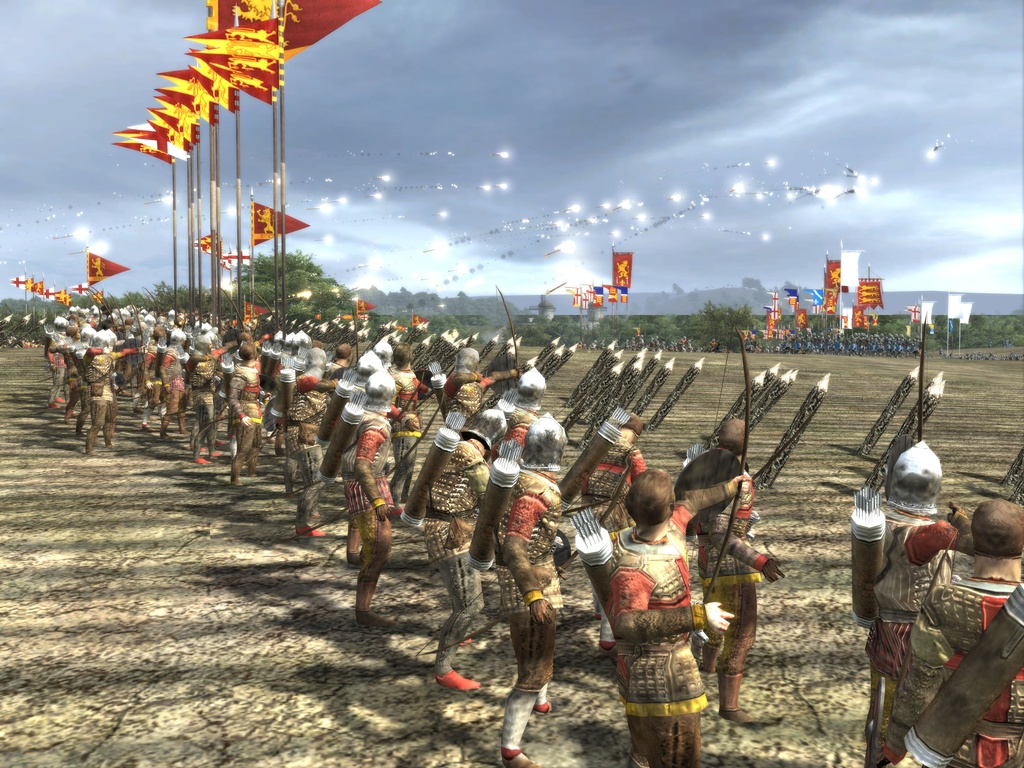
Medieval 2: Total War will be charging its way onto streets in winter 2006. For more information please go to www.totalwar.com or www.sega-europe.com.

The glorious charge of knights on horseback, skies darkening from the flight of hundreds of arrows, massive boulders crashing into castle walls. The reality of it all is a lot more sickening and unpleasant; but at least where movies and games are concerned these Medieval carnage-fests make for great watching and playing.

Medieval II: Total War is in fact the forth game in the Total War game series, but it’s the sequel or upgrade (depending on how you look at it) to the second game in the series - the unsurprisingly titled Medieval: Total War. Other games in the franchise took place in Feudal Japan and more recently in the classical times of the Roman Empire. Confused? Doesn’t matter. What does matter is if you’re after a tip top war-game then Medieval II: Total War is a sure bet for an absorbing game which has that ‘one more turn’ factor down to a tee.

The strength of the Total War games has always been its ability to render formations of hundreds of troops on the battlefield at once. You’re going to be super impressed with the battles of perhaps one or two thousand soldiers. Visually the men on the battlefield have gone through a significant upgrade since the last game. Gone are the armies of clone troops; now even the lowliest pitchfork wielding peasant will be wearing different clothes and sporting an alternative facial growth to the man standing next to him. We also see a welcome return to a variety of terrain types which will have a massive impact on how the battle plays out - a clever defense on a mountain top can confound even the most blinged out army of knights for example.

Outside of the battlefield there’s a campaign to master. The game features about twenty different factions which range from the Christian cultures such as the English, the various Italian states and the Byzantine Empire; to Muslim nations such as Egypt. The later game even enables you to go up against massive, yet poorly armed Native American armies. Each of the factions have their own strengths and weaknesses as well as unique units often with their own special abilities – English Longbowmen can plant stakes in the ground for example.
 There’s lot to do in the strategic game too. Finances need to be balanced, buildings constructed and new units recruited. For each province of your faction you’ll need to choose between a castle which is better for defense and recruiting powerful units or a town which provides significantly more money. Enhanced diplomatic options means making and breaking alliances has a more prominent role; princesses can even be married off to other kingdoms! Of course we can’t forget the Pope either who will, depending who he’s inclined towards, put on pressure to end wars and occasionally call for a Holy Crusade. These can be particularly rewarding – especially if your humongous crusading army ‘just happens’ to pass through an enemies territory on the way to the Holy Land.
There’s lot to do in the strategic game too. Finances need to be balanced, buildings constructed and new units recruited. For each province of your faction you’ll need to choose between a castle which is better for defense and recruiting powerful units or a town which provides significantly more money. Enhanced diplomatic options means making and breaking alliances has a more prominent role; princesses can even be married off to other kingdoms! Of course we can’t forget the Pope either who will, depending who he’s inclined towards, put on pressure to end wars and occasionally call for a Holy Crusade. These can be particularly rewarding – especially if your humongous crusading army ‘just happens’ to pass through an enemies territory on the way to the Holy Land.
There’s a whole lot more to go on about this game but regretfully not enough space to do so. Suffice to say that with near unlimited single player gameplay and multiplayer battles to boot, Medieval II: Total War is a must have for any war-gaming fan.
PROS
Big messy battles
They may not be politically correct, but Crusades are a whole lotta fun
Improves on the already great Total War formula
CONS
Can’t coordinate wars with AI allies
Naval battles automatically resolved
Those dammed priests keep burning my leaders as heretics!
Medieval 2's initial options will be familiar to those who have done a bit of Total Warring in the past. For those who want to jump straight into a battle there is a selection of historical scenarios to choose from including the showpiece of 1066 – The Battle of Hastings. These skirmishes are introduced by a voice over, giving you a context for why the clash actually took place and potential strategies for victory. You can take on either side and generally there will be a very different tactical requirement to emerge victorious.
The historical battles are really only a sideshow to the main event – the grand campaign. By selecting this option you open up the 30-40 hour main game. You start by selecting a nation, one of England, France, Venice, Denmark and the Holy Roman Empire. Each nation has its own defining characteristics and geographical advantages and disadvantages. For instance, England is easier to defend due to its status as an island and the water that surrounds it - but this also makes expansion slightly more difficult. On the other hand, the Holy Roman Empire, sitting right in the heart of Europe, is under threat from every direction but can also expand in any direction. Weighing all the options up I took the patriotic route and became the King of England - Scotland and France watch out.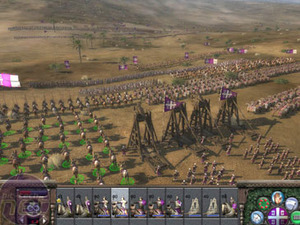
The first thing I noticed that makes Medieval 2 different from previous games in the series is the two different types of city you now have. Every city can either be focused on building your military forces or building your economic capacity - simply put, you decide whether a place is a town or a castle. To survive in the game you'll need a healthy mixture of both and the more astute Emperors and Kings will do their best to protect their valuable towns with their fortified castles.
Once you've set up your cities its time to start expanding. To do that, though, you'll need a steady influx of cash. Here we introduce the first new character – the merchant. The merchant costs as much as an assassin but is certainly more valuable. Each financial-focused city can recruit one (and one alone, more about that later) merchant, and once you are in possession of him he needs to be shipped out to areas of the map where there are valuable resources to your Kingdom. My merchant quickly trundled off to Cornwall, started sending tin back to London and started bring in a healthy amount of cash on each turn.
The merchant is unique in that he can happily operate in any region, whether you have conquered it or not, without causing any diplomatic problems. I could quite happily march into France and start sending back all their wine, which I did pretty promptly, to make a handsome profit. The only way the French can stop me is by sending another merchant to try and muscle me out of business. The merchant doesn't revolutionise the game but it does add another level of complexity that increases the involved feeling.
Playable Factions (With links to the IGN faction previews):
- England - Yellow and Red
- The Holy Roman Empire - Yellow and Black
- France - Light Blue and White
- The Republic of Venice - Dark Brick Red and Yellow
- Spain (Castile) - Yellow and Red
Unlockable Factions:
- Egypt (Including The Ayyubid Dynasty and The Mamluks) - Tanish/Yellow and Black
- The Byzantine Empire - Purple and White
- The Moors (Including the Almohad Dynasty) - Orange and White
- Scotland - Dark Blue and White
- Denmark - Red and White
- Portugal - Light Blue and White
- Poland - Red and White
- Milan - Green and White
- Sicily - White and Black
- Russia - Dark Blue and Red
- Hungary - Orange and Green
- The Turks (Including The Ottoman Empire) - Green and Yellow
Unplayable Factions:
- The Aztec Empire - Light Blue and Yellow
- The Timurids - Black and Red
- The Mongol Empire (Or The Golden Horde) - Dark Green and Tan/White
- The Papal States - Yellow and White
- The Rebel Provinces - Grey

Minimum System Requirements:
English version of Microsoft® Windows® 2000/XP.
Celeron 1.8GHz Pentium 4® (1500MHz) or equivalent AMD® processor.
512MB RAM.
8x Speed DVD-ROM drive (1200KB/sec sustained transfer rate) and latest drivers.
11.0 Gigs of uncompressed free hard disk space.
100% DirectX® 9.0c compatible 16-bit sound card and latest drivers.
100% Windows® 2000/XP compatible mouse, keyboard and latest drivers.
DirectX® 9.0c.
128MB Hardware Accelerated video card with Shader 1 support and the latest drivers.
Must be 100% DirectX® 9.0c compatible.
Monitor must be able to display 1024x768 resolution or above.
As far as most sensible people are concerned, the Total War series has become the gold standard for epic strategy games. Part of the secret has been an evolutionary approach to the game design. The Creative Assembly got the basics right with the very first game, Shogun, and have steadily refined it and expanded on it with each subsequent version, taking advantage of increased system speeds and new graphics hardware, but never radically reinventing the game or making an attempt to dumb it down in order to reach the widest possible audience. The result is that rarest of things: a series that just keeps on getting better without a single damp-squib in the set. Even Age of Empires and Civilization can’t say that.

So some spiteful, cynical part of me wants to tell you that this is where it all goes wrong – this is where Total War jumps the shark. But I can’t. Predictably, Medieval 2 is just what you might expect: a glossy update of the original Medieval: Total War, taking into account the changes and refinements added in Rome: Total War, but with new enhancements thrown on top. In other words, it’s a ridiculously brilliant game.
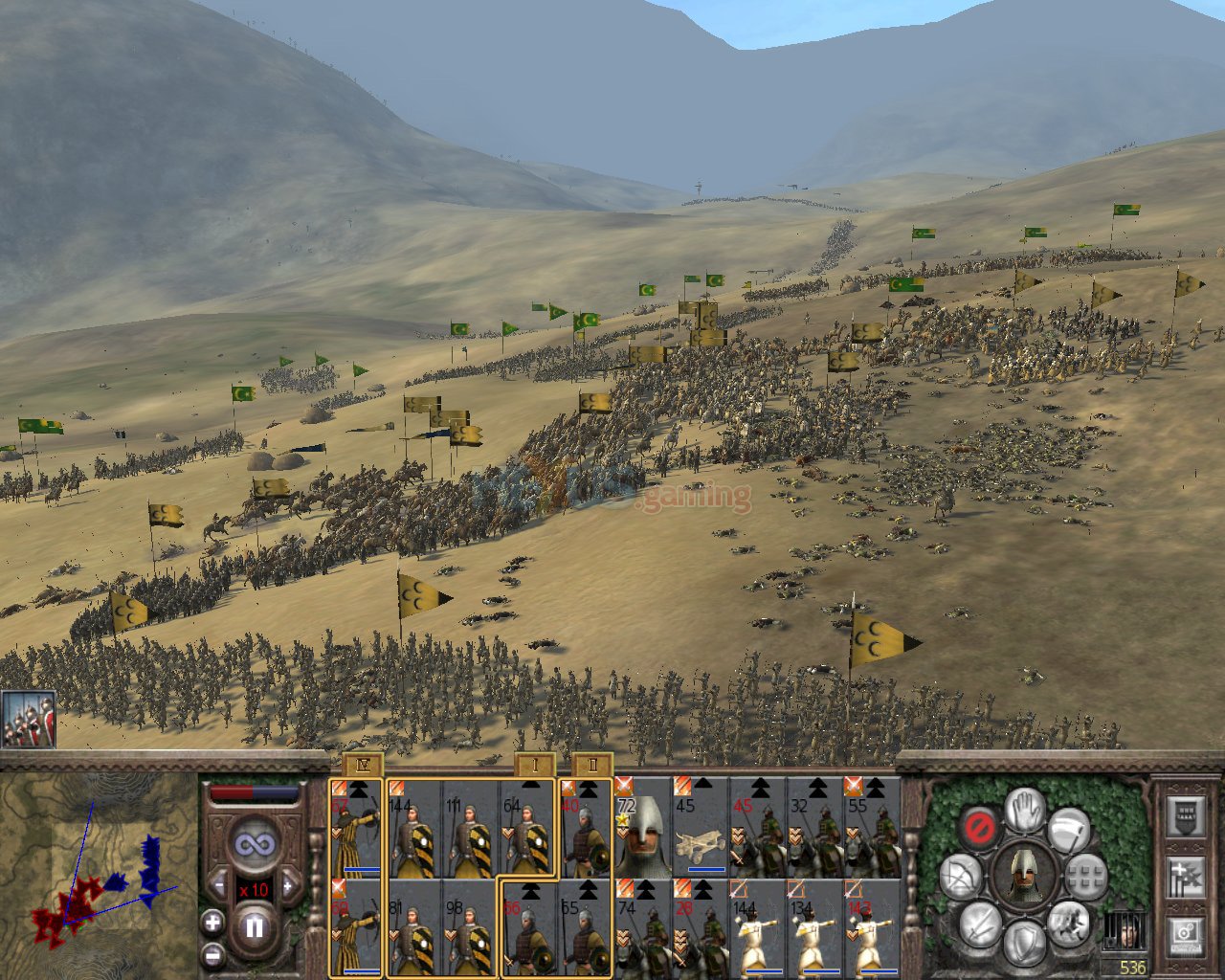
As before, the main single-player campaign game is split in two, with a turn-based map in which you build units, develop your cities and grow your power base, and real-time battles when it’s time for your armies to hit the field. With Rome, The Creative Assembly made serious efforts to ensure that the turn-based portion could stand up in its own right, and this trend is, if anything, even more pronounced here. In each turn there are troops that need recruiting, generals and armies that need moving, buildings that need building, fleets that need directing and agents – spies, assassins, diplomats and the like – that need to be shifted around the map. As in any good Civ-style game, buildings aren’t just unit factories as they would be in an RTS; some, like churches or brothels, play an important part in keeping your population happy and save your cities from riots or open rebellion. And without trade and taxing for a firm financial footing, you’ll soon find your war chest running dry.

There are some new tweaks this time around. Overall, there’s an even greater sense here that your own empire-building is taking place on a larger world stage, where the alliances of others have a dramatic effect on how soft or hard you have to play things. This makes diplomacy, strong alliances and good marriages particularly important. This shift of emphasis is also reflected in an additional dimension: religion. As anyone who knows anything about medieval history can tell you, the support or enmity of the Catholic papacy played a huge role in the era’s more earthly conflicts, and Medieval 2 does a fine job of bringing this into the gameplay.

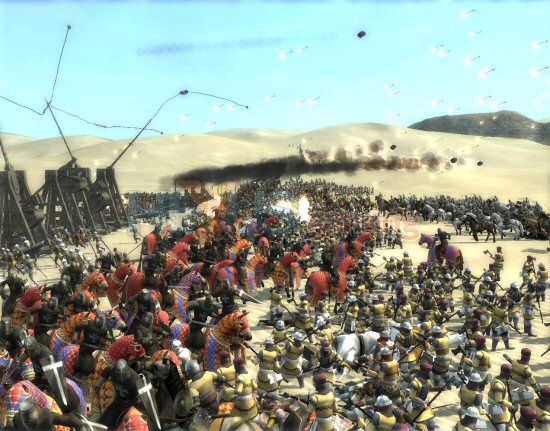

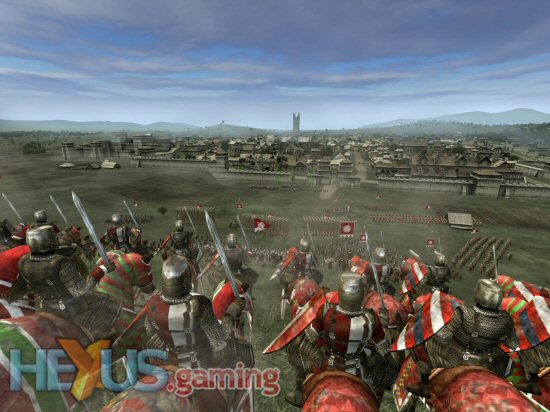

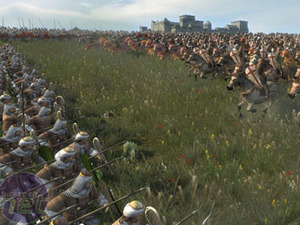




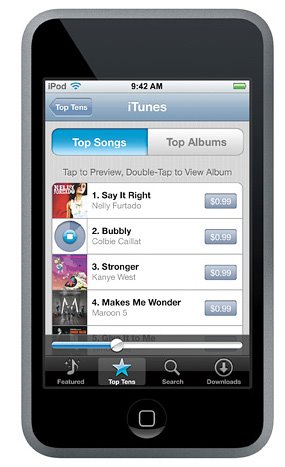



0 comments:
Post a Comment